Touw, Petrus Dirk “Piet”, born 11-07-1917 in Groningen. 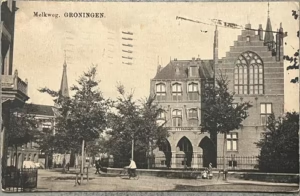 to Dirk Touw, machinist by profession and his wife Petronella Cornelia, born Prinsen. Piet was Corporal in the Dutch 3rd Battalion of the 41st Infantry Regiment, charged with guarding strategic objects. Together with Corporals Kooiman and Jongkind, he has to secure the bridge over the Maas near Roermond. To the unit commanded by sergeant Marcelis Adolf De Vries
to Dirk Touw, machinist by profession and his wife Petronella Cornelia, born Prinsen. Piet was Corporal in the Dutch 3rd Battalion of the 41st Infantry Regiment, charged with guarding strategic objects. Together with Corporals Kooiman and Jongkind, he has to secure the bridge over the Maas near Roermond. To the unit commanded by sergeant Marcelis Adolf De Vries 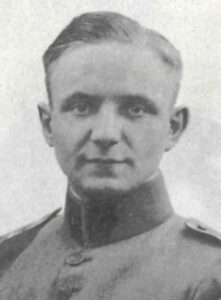
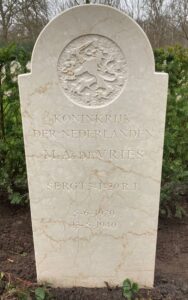 also a rail worker has been added. He must ensure the safe conduct of train traffic. The distance between the railroad bridge and the German border is about six kilometers. The enemy is close by. the son of Eduard de Vries from Sneek , who was headmaster of the Christian National School in hamlet de Haart. After elementary school he went to the Christian Lyceum (HBS-B) in Zutphen. More than two weeks after the outbreak of World War II (Sept. 1, 1939), he arrived at the School for Reserve Officers of Infantry in Kampen. On 01-12-1939 De Vries was promoted to corporal and two months later to sergeant-titular. Via the 20th Depot Battalion in the Colonel Palmkazerne in Bussum,
also a rail worker has been added. He must ensure the safe conduct of train traffic. The distance between the railroad bridge and the German border is about six kilometers. The enemy is close by. the son of Eduard de Vries from Sneek , who was headmaster of the Christian National School in hamlet de Haart. After elementary school he went to the Christian Lyceum (HBS-B) in Zutphen. More than two weeks after the outbreak of World War II (Sept. 1, 1939), he arrived at the School for Reserve Officers of Infantry in Kampen. On 01-12-1939 De Vries was promoted to corporal and two months later to sergeant-titular. Via the 20th Depot Battalion in the Colonel Palmkazerne in Bussum, 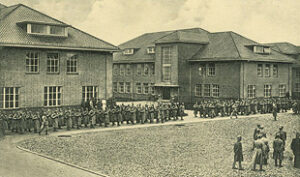 he was assigned on 01-05-1940 to the 3rd Company, 1st Battalion, 20th Infantry Regiment. On May 10, the Germans invade the Netherlands; Sergeant de Vries’ army unit becomes involved in the defense of the Grebbeberg in Rhenen.
he was assigned on 01-05-1940 to the 3rd Company, 1st Battalion, 20th Infantry Regiment. On May 10, the Germans invade the Netherlands; Sergeant de Vries’ army unit becomes involved in the defense of the Grebbeberg in Rhenen. 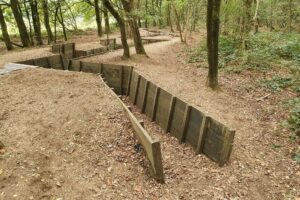 where also the webmaster’s mother’s cousin, Ackermans, Florentius Johannes Maria “Jan,”
where also the webmaster’s mother’s cousin, Ackermans, Florentius Johannes Maria “Jan,” 
 on 13-05-1940, was killed, age 32. On Whit Monday, Marcel de Vries is fatally wounded during a battle with the SS regiment Standarte Der Führer.
on 13-05-1940, was killed, age 32. On Whit Monday, Marcel de Vries is fatally wounded during a battle with the SS regiment Standarte Der Führer. 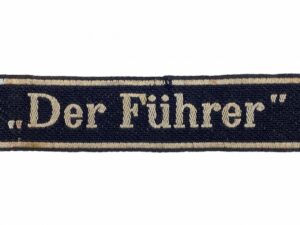 De Vries was then only 19 years old and thus the youngest of the seven Aalten soldiers killed in May 1940. His father (mother already deceased), sister Nine and fiancée Annie mourned his early death..
De Vries was then only 19 years old and thus the youngest of the seven Aalten soldiers killed in May 1940. His father (mother already deceased), sister Nine and fiancée Annie mourned his early death..
A few weeks before the German invasion, Pete wrote another letter to his parents expressing his concerns about the tense situation. He wrote, “Neutrality doesn’t seem to exist these days. I don’t believe we will stay out of the war. I am prepared for anything.”
The night of May 9-10 is uneasy. Explosions can be heard in the distance as explosives are used along the roads to Roermond to knock down trees that should serve as roadblocks. Perhaps Piet Touw also heard the gunshots in the city center. There a gunfight had broken out between Dutch soldiers and German infiltrators who had targeted the traffic bridge over the Meuse River. It was the first armed confrontation on Dutch soil. Sergeant De Vries had the fences at the railroad bridge closed as a precaution so that no more trains could pass. Not long afterwards, at 03:07 a.m., a group of about 15 men arrive in the dark over the railroad embankment. They are wearing overalls and have pickaxes slung over their shoulders. The corporals manhandle them to stop and identify themselves.
Death and burial ground of Touw, Petrus Dirk “Piet”.
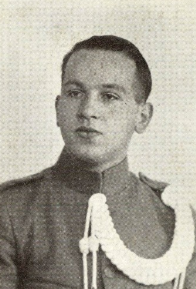
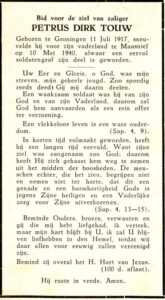
Unusual pickaxes. The men claim to be working on the tracks and show an ID from Dutch Railways. The railroad employee doesn’t trust it. The picks are of an unusual model, and “location 413” to which they are supposedly on their way also does not look familiar to him. They turn out to be German soldiers trying to overpower the bridge. When it is clear that they have been exposed, they open fire. Corporal Piet Touw is hit in the chest and dies on the spot. But like the entire Dutch army, they also faced a large German force. Still, Piet Touw and his comrades in arms succeeded in part in their mission. They were able to resist just long enough to ensure that the railroad bridge could be blown up. A number of Germans plunged into the river and died as a result. In addition, an armored train that was ready to enter Holland was unable to cross the bridge. 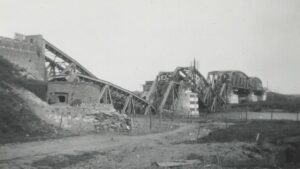
The family has some items that recall Piet Touw. Among them is his identity card. On the fold is an indeterminate brownish stain. German supremacy“ I assume that is dried blood of Piet Touw. 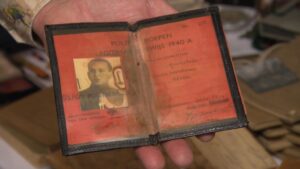 He is in all probability the first victim of World War II in the Netherlands. For him, the war lasted only a few hours, but that has nothing to do with a lack of courage. They fought like lions.”But like the entire Dutch army, they too faced a huge German superiority. Still, Piet Touw and his comrades in arms succeeded in part in their mission. They were able to resist just long enough to ensure that the railroad bridge could be blown up. A number of Germans plunged into the river and died as a result. In addition, an armored train that was ready to enter Holland was unable to cross the bridge.
He is in all probability the first victim of World War II in the Netherlands. For him, the war lasted only a few hours, but that has nothing to do with a lack of courage. They fought like lions.”But like the entire Dutch army, they too faced a huge German superiority. Still, Piet Touw and his comrades in arms succeeded in part in their mission. They were able to resist just long enough to ensure that the railroad bridge could be blown up. A number of Germans plunged into the river and died as a result. In addition, an armored train that was ready to enter Holland was unable to cross the bridge.
Touw, Petrus Dirk “Piet”.is buried at the Roman. Catholic. Cemetery in Maasniel, Plot/row/number 647. Corrie and Trudy are cousins of Pete, visited his grave. Corrie (86) still sat on his lap as a baby; Trudy (83) had not yet been born. Still, they feel strongly about their Uncle Pete’s fate. They have seen how the family suffered, such as their father Kees. But certainly Pete’s mother as well. “When we went to stay with her, you would often see Grandma sitting with Pete’s helmet on her lap,” Trudy says.
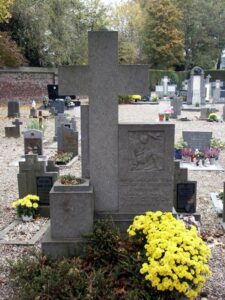
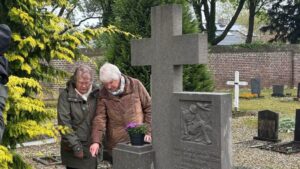





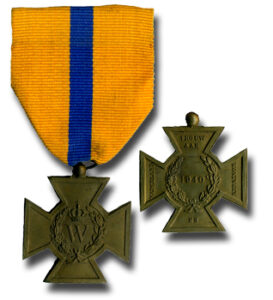











Leave a Reply